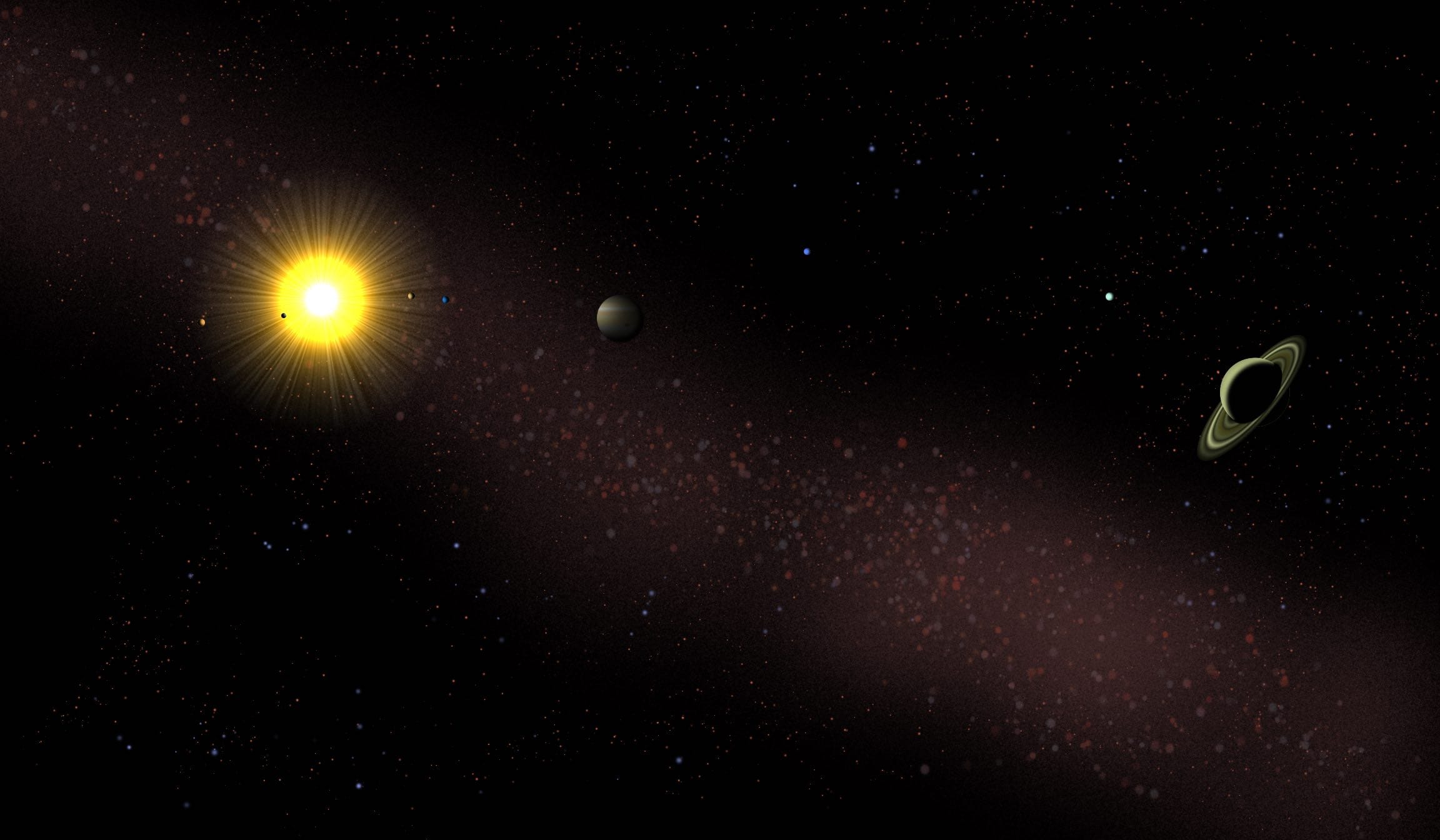Various Links
Paper
doi: 10.1093/mnras/stad719
arXiv: 2303.05567
NASA ADS
Code
Code to run the simulations and reproduce the figures of the paper can be found on GitHub at zyrxvo/GR-and-Long-term-Stability
Articles
An interesting discussion about this article can be found on Hacker News.
General Relativity and Long-term Stability
We acknowledge the support of the Natural Sciences and Engineering Research Council of Canada (NSERC).
Motivation
For centuries, scientists have studied the motion of the planets in the solar system. Newton's law of gravitation and Einstein's theory of general relativity have allowed us to model the motion of the planets very precisely. The Laplace-Lagrange linear expansion of the solar system provides a description of the solar system that averages over the mean motions of the planets. This approximation enables a general investigation into the long-term (secular) dynamics of the planets. Since Poincare's proof that there is no analytical solution to multi-planetary dynamics over an infinite time interval, further mathematical developments have shown that the inner solar system is chaotic due to overlapping secular resonances. These resonances are at play because the planets push each other into or out of resonance through exchanges of angular momentum. Specifically, we were interested in better understanding Mercury's diffusive walk through phase space and the Mercury-Jupiter resonance that dramatically increases the eccentricity of Mercury. We set out to understand how these changes were related to the perihelion precession rate caused by general relativity and its affect on the stability of the solar system over billions of years. See secular resonances for an overview.
Of all the contributions to Mercury's perihelion precession, the most important are the gravitational interactions from the other solar bodies contributing 5.323 "/yr (arcseconds per year), followed by the precession from GR (the gravitoelectric effect) with 0.4298 "/yr, followed by other less significant contributors such as solar oblateness which provide 0.00028 "/yr. 1 Thus, the impact of general relativity follows closest behind Newtonian planet-planet interactions and is more than three orders of magnitude more influential than any additional effects. Since the long-term stability of solar system is connected to Mercury's perihelion precession rate, general relativistic effects are very important. We consider an N-body Newtonian model of the solar system with an additional potential term in our force calculation to have a perihelion precession that is consistent with general relativity.
Methods
We ran 1280 N-body simulations of the solar system to study its long-term stability. We integrated the current configuration of the solar system forward in time for 12.5 billion years using
REBOUND
and the Wisdom-Holman integrator
2
with symplectic correctors and the lazy implementation of the kernel method, WHCKL. Additionally, we used a modified version
3
of
REBOUNDx
to include corrections from GR. We used a timestep of about 3 days. All of the instabilities in our simulations resulted from a Mercury-Venus close encounter or collision.
To consider the impact of general relativity on the perihelion precession rate of the planets we included an additional potential term in our force calculation to modify the perihelion precession from GR. For each simulation, we modified the first order post-Newtonian corrections to the perihelion precession from general relativity to experiment with different strengths of these corrections. We experiment with different strengths for the general relativistic corrections using a time-dependent parameter. From this, we developed a physically motivated Fokker-Plank advection-diffusion model based on the work of Mogavero and Laskar 4 to explain the observed instability rate in our numerical experiments. We compared this model to the previous work of Laskar and Gastineau 5 and our new N-body data. We reconfirm that the stability of the solar system is highly dependent on the presence of general relativity. The instability times are shown graphically in Figure 1 with respect to the time-dependent parameter in their force calculation.
Conclusions
We quantified how a change in general relativistic corrections not only changes the planets' perihelion precession rate, but also the rate at which the precession rate diffuses with time. Additionally, we found no evidence of any critical strength of GR that is required for stability. For example, had our results shown that slowly changing the general relativistic precession frequency leads to sudden increase in the instability rate, then we could have placed a limit on alternative theories of general relativity by noting that the solar system has not gone unstable yet. However, this is not the case.
The model with general relativistic corrections uses a constant diffusion coefficient and no advection term, and the survival fraction (the fraction of simulations that remain stable over time) is found to match well with N-body simulations of the solar system for the first 5 billion years. The model without general relativistic corrections, however, requires changes to both the initial condition and the diffusion coefficient to match the N-body simulations. The advection term is necessary to capture the time-dependent strength of GR from our experiment.
Significantly, the model reproduces the statistical results across different analytical and numerical methods, without the introduction of any new free parameters. This model can help us understand the long-term stability of the solar system. Our work provides additional evidence that the stability of the solar system is robust to moderate changes to the secular system. The fact that we are able to model the evolution so well with a simple diffusion model also shows that current numerical results are robust against small perturbations whether they are physical or numerical. We expect that statistical results are in agreement as long as simulations resolve secular frequencies accurately enough so that physical diffusion (not numerical diffusion or advection) is the dominant driver of the instability.
For future work, we propose further investigation into the expected time to instability for other secularly evolving planetary systems and whether or not a one dimensional advection-diffusion model is representative of more systems or only the solar system (Hussain & Tamayo 2020).
-
See this GR_Sweep branch for the modified version of
REBOUNDxfork that we used. ↩
